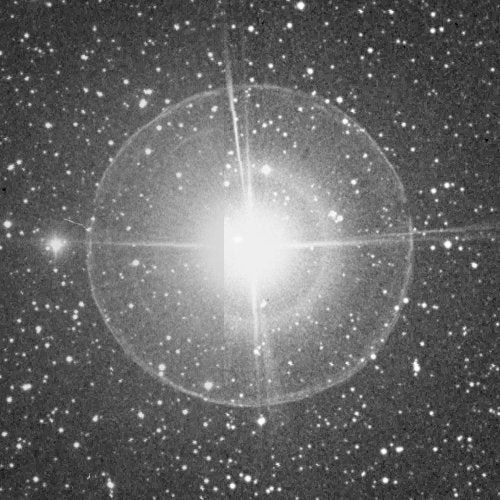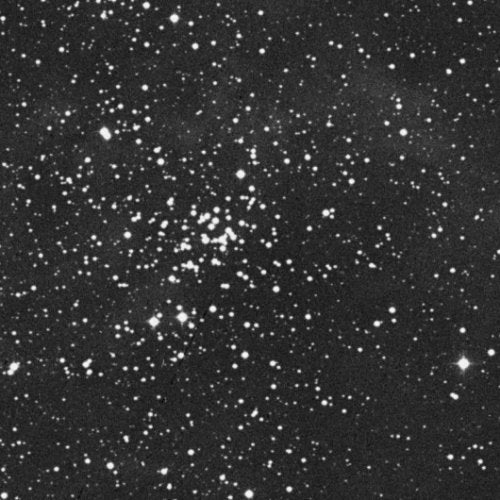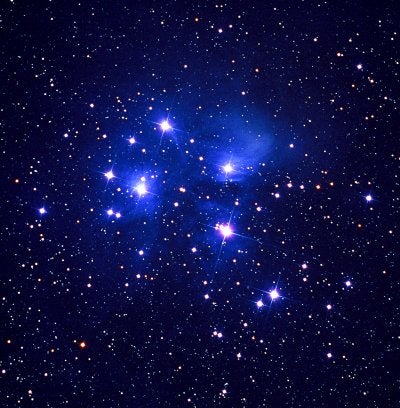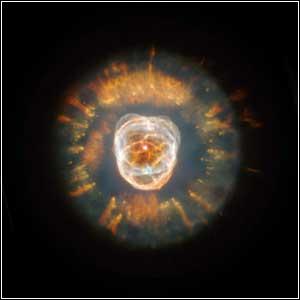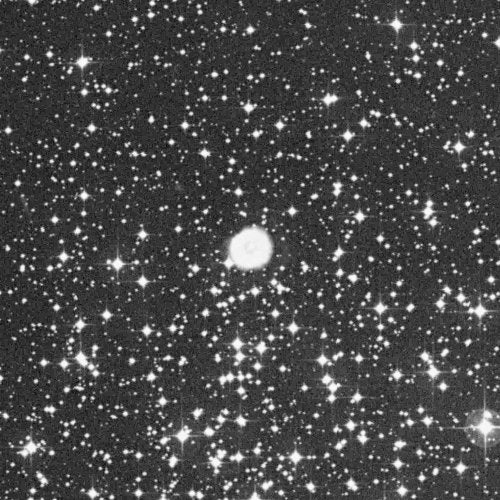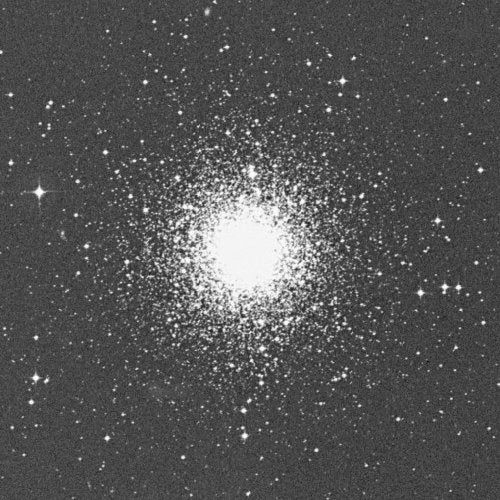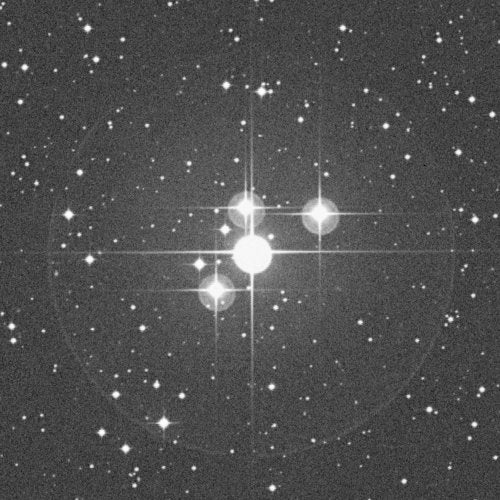To chase down these objects, you’ll need a telescope (for most of them), an observing site with a clear view of the sky plus a low level of man-made skyglow, and a good star atlas. For the latter, try Sky Atlas 2000.0 or Norton’s Star Atlas. (Patience won’t go amiss, either.)
Theta Aurigae
Theta (θ) Aurigae is a blue-white star of magnitude 2.6 with a close companion of magnitude 7.1. This is a tough double requiring an aperture of at least 4 inches (100mm) and a steady night to pick it out.
NGC 1907
The binocular cluster M38 in Auriga has a smaller and fainter neighbor, NGC 1907, which can be seen as a hazy spot in small telescopes. Larger apertures are required to resolve its individual stars.
The binocular cluster M38 in Auriga has a smaller and fainter neighbor, NGC 1907, which can be seen as a hazy spot in small telescopes. Larger apertures are required to resolve its individual stars.
M45
Photographs show the Pleiades (M45) is immersed in nebulosity, once regarded as the remnants of the cluster’s birth cloud but now recognized as an unrelated nebula into which the stars recently have drifted. This nebulosity requires a large aperture and ideal sky conditions to be glimpsed visually.
Photographs show the Pleiades (M45) is immersed in nebulosity, once regarded as the remnants of the cluster’s birth cloud but now recognized as an unrelated nebula into which the stars recently have drifted. This nebulosity requires a large aperture and ideal sky conditions to be glimpsed visually.
NGC 2392
Planetary nebula NGC 2392, also known as the Eskimo Nebula, in Gemini, can be seen in small telescopes as a blue-green ellipse about the same size as Saturn’s disk. Larger apertures will be needed to spot the outer ring, like the fringe on a parka, which gives rise to the nebula’s popular name. Look also for its central white dwarf, the remains of the star that shed its outer layers.
Planetary nebula NGC 2392, also known as the Eskimo Nebula, in Gemini, can be seen in small telescopes as a blue-green ellipse about the same size as Saturn’s disk. Larger apertures will be needed to spot the outer ring, like the fringe on a parka, which gives rise to the nebula’s popular name. Look also for its central white dwarf, the remains of the star that shed its outer layers.
NGC 2438
One of the more unusual deep-sky sights is planetary nebula NGC 2438 in Puppis. In moderate to large apertures, it appears as a ghostly glow apparently within open cluster M46. However, it is actually a foreground object superimposed by chance.
One of the more unusual deep-sky sights is planetary nebula NGC 2438 in Puppis. In moderate to large apertures, it appears as a ghostly glow apparently within open cluster M46. However, it is actually a foreground object superimposed by chance.
M79
Lepus often is overlooked beneath the feet of Orion, but here you will find M79, a distant globular cluster that appears as a tiny, faint haze in smaller instruments. Apertures of at least 4 inches (100mm) are needed to resolve its outliers. In the same telescopic field of view is the multiple star Herschel 3752, a 5th-magnitude primary with 7th- and 9th-magnitude companions.
Lepus often is overlooked beneath the feet of Orion, but here you will find M79, a distant globular cluster that appears as a tiny, faint haze in smaller instruments. Apertures of at least 4 inches (100mm) are needed to resolve its outliers. In the same telescopic field of view is the multiple star Herschel 3752, a 5th-magnitude primary with 7th- and 9th-magnitude companions.
In Lepus, NGC 2017 is a knot of stars otherwise known as the multiple star Herschel 3780. Five stars ranging from 6th to 10th magnitude are visible through modest apertures, but one of the 9th-magnitude components is a close double divisible with 4 inches (100mm), while at least 8 inches (200mm) will divide the brightest member of the group.
Digitized Sky Survey / STScI / AURA
NGC 2017
Also in Lepus, NGC 2017 is a knot of stars otherwise known as the multiple star Herschel 3780. Five stars ranging from 6th to 10th magnitude are visible through modest apertures, but one of the 9th-magnitude components is a close double divisible with 4 inches (100mm), while at least 8 inches (200mm) will divide the brightest member of the group.
Also in Lepus, NGC 2017 is a knot of stars otherwise known as the multiple star Herschel 3780. Five stars ranging from 6th to 10th magnitude are visible through modest apertures, but one of the 9th-magnitude components is a close double divisible with 4 inches (100mm), while at least 8 inches (200mm) will divide the brightest member of the group.

